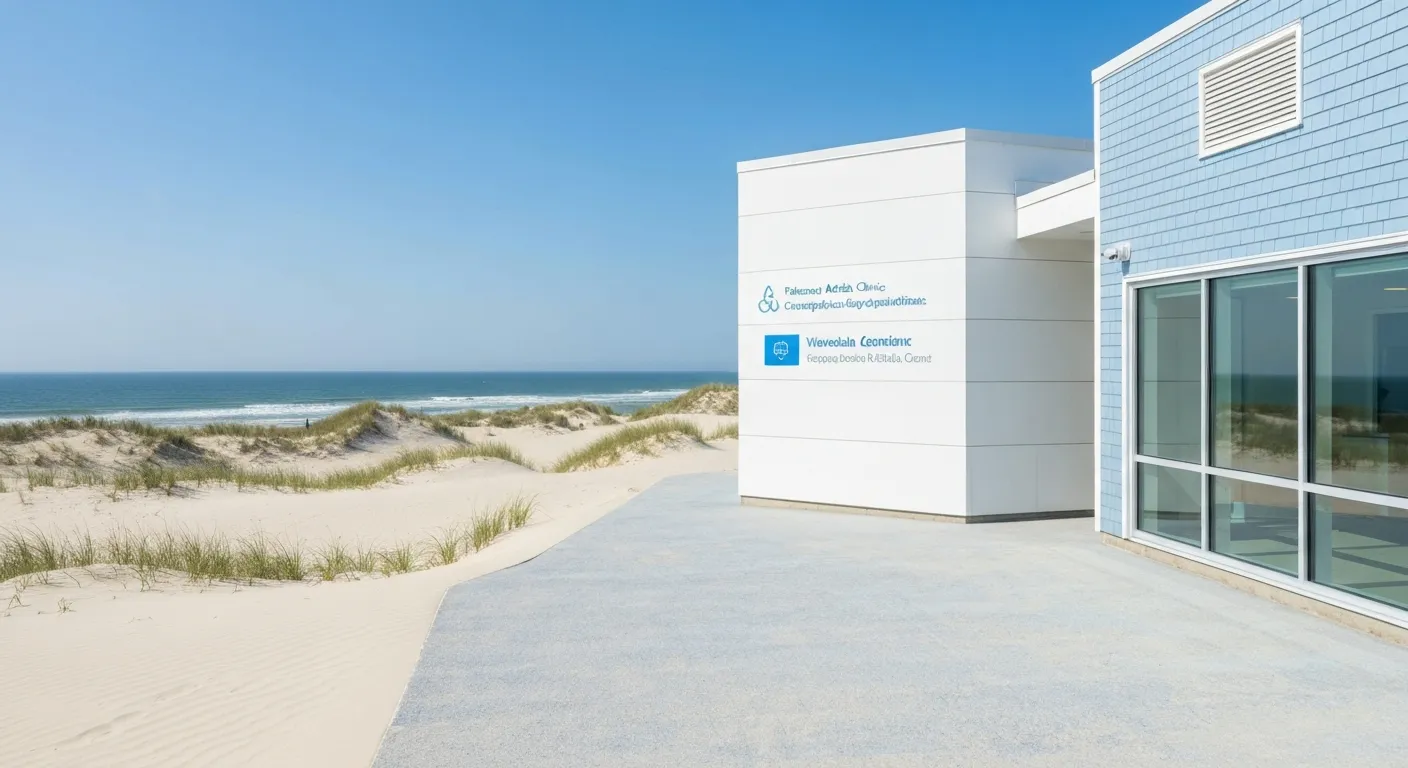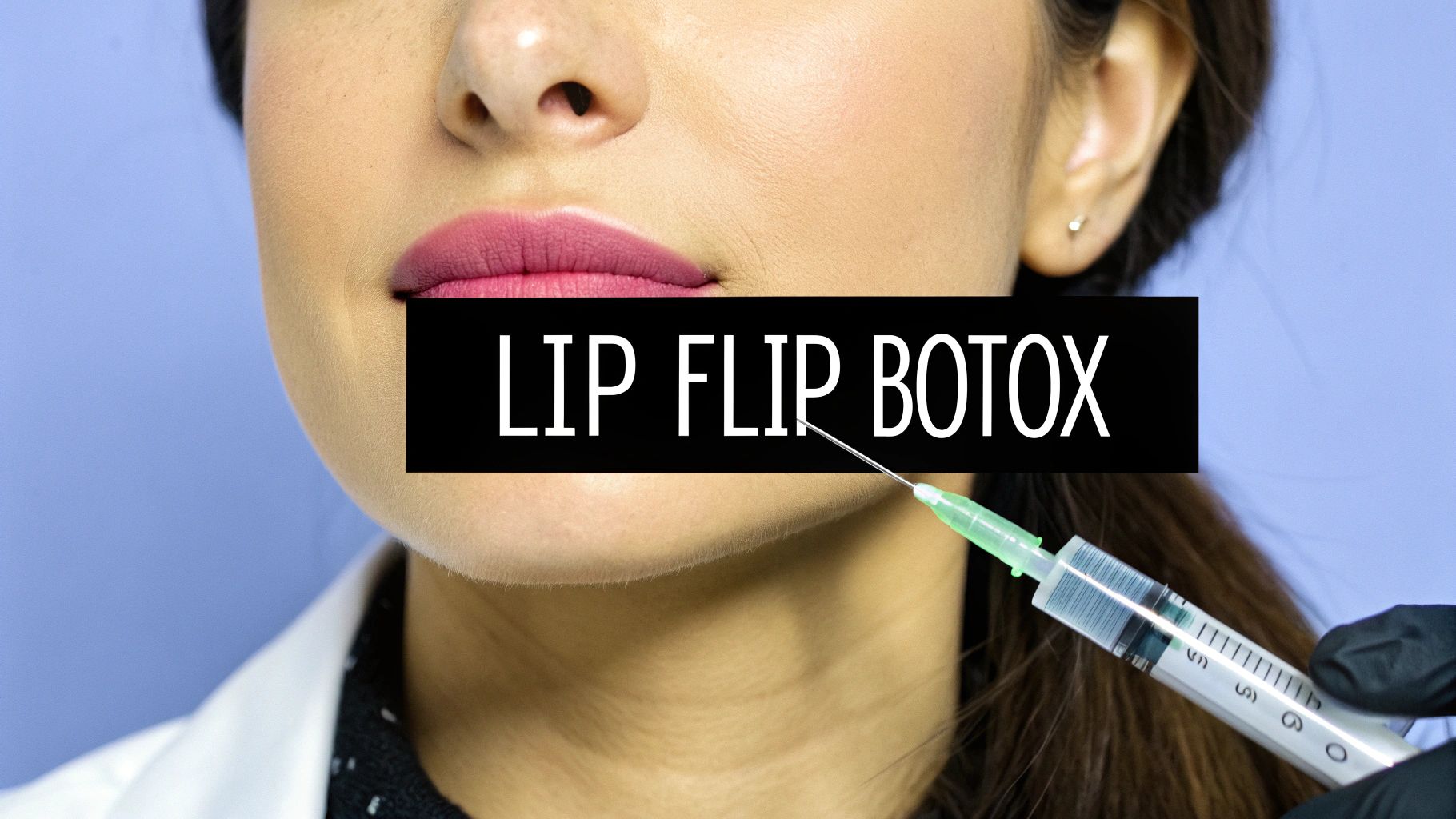
December 16, 2025
Explore coolsculpting chin fat: A guide to sharper definition
Want to tackle coolsculpting chin fat? This guide explains the procedure, pricing, downtime, and expected results to help you decide on a sharper jawline.
Oct 29, 2025

When people ask about the eyelid surgery recovery time, the good news is that the most noticeable part—the heavy swelling and bruising—tends to clear up pretty fast. You’ll see a major difference in just the first 10 to 14 days.
But it's important to remember that complete healing takes time. Think of it less like flipping a switch and more like a journey with a few distinct stages. Your final, polished results will settle in over the course of several months.
The moment your blepharoplasty is over, your recovery begins. Knowing what's normal and what to expect along the way can make the whole process feel much less stressful.
The goal here is to set realistic expectations. While many seek eyelid surgery for cosmetic reasons, it often addresses underlying structural issues. If you're curious about the 'why' behind the procedure, this guide explains what causes under-eye bags and how to fix them and offers great insight.
Your recovery won't happen all at once; it unfolds in phases. The first few days are all about rest. As the weeks pass, you'll slowly start adding things back into your routine, like wearing makeup or getting back to the gym.
A successful recovery is a partnership between your surgeon's skill and your diligent aftercare. Following post-operative instructions isn't just a suggestion—it's the most critical factor in achieving your desired outcome with minimal complications.
To give you a clearer picture, here’s a quick overview of what the healing timeline typically looks like. This table breaks down the key stages so you know what's coming.
As you can see, the most intensive recovery happens right at the beginning. You’ll be hitting significant milestones, like getting back to work or wearing makeup, within just a couple of weeks.

Ultimately, a blepharoplasty is designed to provide lasting improvement. The incisions are carefully placed to mature and fade, eventually becoming almost unnoticeable. This predictable timeline helps you track your progress and provides a clear roadmap to your final look.

That first week after surgery is definitely the most intense part of the recovery process. Knowing what’s coming day-by-day can make a world of difference, helping you feel prepared and in control rather than anxious. Think of this initial period as setting the stage for a great result.
Your only jobs are to rest and meticulously follow your surgeon's instructions. This is when the swelling and bruising will look their worst, but it’s also when your body is working overtime to heal.
Right after your surgery and for the next 48 to 72 hours, you'll see the most significant swelling and bruising. It’s completely normal for your eyelids to feel tight and for your vision to be a bit blurry, which is usually just from the protective ointment and the swelling itself.
During this crucial time, your to-do list is short and simple:
By day four, things really start to look up. You should notice the swelling beginning to subside, and the bruising will often start changing colors as it begins to fade—a great sign that you're healing well.
Sometime during this window, usually between days five and seven, you'll have your first follow-up appointment. This is when your surgeon will check on your progress and, if you have them, remove any non-dissolvable stitches. Getting the stitches out is a huge milestone; most people say they feel instantly more comfortable afterward.
The recovery from eyelid surgery moves along in pretty predictable stages. In fact, many patients feel ready to head back to work within a week and can get back to most of their usual routine in about 10 days. You can explore more eye-opening facts on eyelid surgery to get a better sense of the full picture.
By the end of this first week, you’re not at the finish line, but you are absolutely over the biggest hurdle. The toughest part is behind you, and you’ll start to catch the first exciting glimpses of your refreshed, new look.

Beyond the expected swelling and bruising, your body will send you other signals that it’s healing. It’s completely normal to experience a few temporary side effects, and knowing what to look for can help you navigate your eyelid surgery recovery time with confidence.
In those first few weeks, you might notice your eyes feel unusually dry and gritty, or paradoxically, they might water more than usual. This is a common occurrence, as the surgery can temporarily throw off your natural tear production and blinking reflexes. It’s also quite typical to deal with some light sensitivity and even a bit of blurred vision.
Don't let these sensations worry you. Think of them as minor bumps in the road—temporary inconveniences on the journey to your final, refreshed look. They're simply signs that the healing process is well underway.
A little proactive care goes a long way in making your recovery smoother and more comfortable. Consistency is your best friend here.
Here are a few simple but effective ways to manage these common symptoms:
Research consistently shows that while patients are overwhelmingly happy with their final results, temporary issues like dry eye or excessive tearing are just part of the package. Sticking to your post-op care instructions is the best way to manage everything. For more in-depth strategies, check out our guide on pain management after surgery. And remember, while these symptoms are normal, you should never hesitate to call your surgeon if something feels off.

So, how can you influence your own healing journey? Getting the best results and shrinking your eyelid surgery recovery time really comes down to what you do at home. Think of it this way: your body is working hard to heal, and you can give it a major boost with some simple, consistent care.
Good aftercare actually starts before your surgery. Setting yourself up for success is half the battle. If you want a full checklist, our guide on https://www.ccplasticsurgery.com/blog/how-to-prepare-for-surgery is the perfect place to start.
Your eyes are going to be extra sensitive after the procedure, so protecting them becomes your number one job. Shielding them from the outside world isn't just a suggestion—it's essential for preventing irritation that could set back your healing.
A nutrient-rich diet and proper hydration are your secret weapons for accelerated healing. Foods high in Vitamin C, zinc, and protein help rebuild tissue, while staying hydrated reduces swelling and flushes out toxins.
Recovery is a full-body process, and that includes your mind. When you're stressed, your body diverts energy away from healing. Keeping calm and positive really does make a physical difference.
Learning about healthy coping mechanisms for stress can be incredibly helpful during this time. Above all, give yourself some grace. Be patient and let your body heal at its own pace.
It's completely normal to be eager to see the final outcome of your surgery, but recovery is a process that requires a bit of patience. While you'll see a big difference pretty quickly, the true, polished result takes some time to fully emerge. I often tell my patients to think of it like a fine wine—it gets better with time.
Most of the dramatic swelling and bruising will be gone within the first 10 to 14 days. This is the point where you'll really start to see the new shape of your eyes and feel like you're looking more like yourself again. It’s a great milestone, but it's not the finish line just yet.
Even after the initial healing phase, your body is still working behind the scenes. Some very subtle swelling can hang around for a few more weeks or even months. Honestly, it’s usually so minor that only you and your surgeon would ever notice it.
At the same time, the incision lines are going through their own maturation process. They’ll start out looking a bit pink but will gradually fade, soften, and settle right into the natural creases of your eyelids, eventually becoming almost impossible to spot.
Your final, completely settled results from a blepharoplasty are typically visible around the six-month to one-year mark. By then, every last bit of swelling is gone and the scar tissue has fully matured, revealing a refreshed and natural look.
It’s easy to see why eyelid surgery has become so popular. Recent global data shows it's the most common cosmetic surgical procedure in the world, with over 2.1 million procedures performed. Experts agree that its appeal is simple: it offers significant rejuvenation with a surprisingly short initial downtime. You can learn more about the reasons for blepharoplasty's popularity and see the kind of results people are getting.
Knowing this full timeline from the start helps you set realistic expectations. It allows you to relax and enjoy the process as your new, revitalized look is gradually unveiled.
It's completely normal to have a lot of questions as you head into your recovery. Knowing what to expect can make the entire healing journey feel smoother and far less intimidating. Let's walk through some of the most common things patients ask.
How long will the swelling and bruising really last?
You'll see the most significant swelling and bruising in the first few days, but things start looking much better by the end of week two. Most of the noticeable discoloration fades away by day 10-14. A tiny bit of residual swelling might hang around for six to eight weeks, but honestly, it's usually so subtle that only you would notice it.
When can I finally wear makeup or contacts again?
Patience is key here. Most surgeons will give you the green light for eye makeup after about two weeks. This wait is crucial because it gives those delicate incisions the time they need to heal, slashing the risk of infection. You can typically start wearing your contact lenses again around the same time, once the swelling has gone down enough for them to feel comfortable. But always, always check with your surgeon first.
What activities are off-limits during recovery?
For the first two to three weeks, think of yourself as being in a protected zone. That means no strenuous activities—period. Avoid heavy lifting, high-impact workouts, or even bending over where your head dips below your heart. Anything that spikes your blood pressure can increase swelling or, worse, cause bleeding. It's also critical to steer clear of pools and hot tubs until your surgeon confirms your incisions are fully closed.
Your surgeon is an artist when it comes to placing incisions. They're tucked away in the natural creases of your eyelids, making them incredibly discreet once they've healed.
Will I have noticeable scars from my eyelid surgery?
This is a huge concern for many, but the news is good. Surgeons are meticulous about hiding incisions. Right after surgery, they'll look like fine pink lines. Over the next several months, you'll watch them fade beautifully. By the six-month to one-year mark, they mature into faint, thin lines that are practically invisible when your eyes are open and tough to spot even when they're closed.
At Cape Cod Plastic Surgery, Dr. Fater and his team are here to guide you through every single step of your recovery. If more questions pop up, or if you're ready to explore your options, we invite you to schedule a personalized consultation.

December 16, 2025
Want to tackle coolsculpting chin fat? This guide explains the procedure, pricing, downtime, and expected results to help you decide on a sharper jawline.

December 16, 2025
Ensuring Patient Safety Through Rigorous Accreditation on Cape Cod

December 15, 2025
Considering a subtle enhancement? Learn what is lip flip botox, how it differs from fillers, the costs involved, and what the procedure is really like.